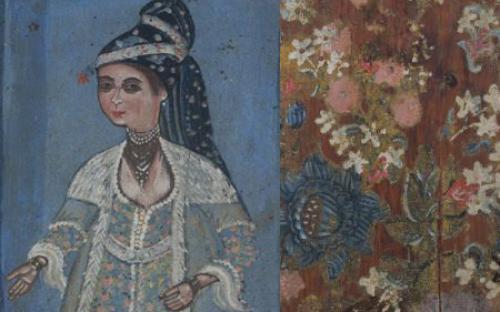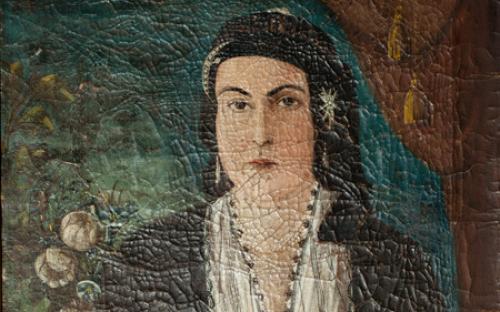History and Culture of Cypriot Dress
Dress is a multi-dimensional cultural phenomenon and its development is affected by many factors, climatic/geographical, historical, political, social, religious. Dress denotes difference or similarity, devotion and defiance. National identity, class identity, gender or political allegiance, ethnic or regional distinctions are expressed in dress. Furthermore, dress is the mirror of history and culture, the outcome of the exploitation of local natural resources but also of imported materials acquired by trade; it reflects the technological standard at any given period, the political and financial situation, the social stratification, the religious beliefs, customs and rites; it incorporates tradition and reflects identity, as well as foreign influences selectively adopted and/or assimilated. The clothing commonly worn in the pre-industrial era is known as “traditional”. Contrary to fashion, traditional dress is characterized by conservatism and slow development. The digital library facilitates the study and dissemination of the history of the Cypriot dress in its broader socioeconomic and cultural context. Utilizing the available written, visual and material evidence, primary focus is given to the early modern and modern eras corresponding to the periods of Ottoman and British rule in Cyprus. During this time the development of Cypriot dress mirrored aspects of the cultural identity, the daily life and the socioeconomic aspirations of the various strata of Cypriot society as they transitioned between the insular realities of Ottoman Cyprus and the island’s gradual Europeanization in the colonial context of the British Empire. The use of advanced digital technologies and applications offers a unique approach to an important aspect of Cypriot Cultural Heritage. Digital documentation, 2D and 3D imaging and database applications contributes to the creation of a web-based digital platform that will virtually narrate and explore the cultural development of the Cypriot dress. The project is an integral part of the framework of Dioptra, the Cyprus Institute’s digital library for Cypriot Culture. It will be the first comprehensive attempt to utilize the great opportunities offered in the field of Digital Cultural Heritage for the study and dissemination of the history of dress in Cyprus. Furthermore, the platform will be a virtual museum presenting the Traditional Cypriot Dress of all communities living on the island, Greek Cypriots, Turkish Cypriots and Armenians.
The following activities were completed in 2016/2017:
Cultural mapping of the museums and private museums in Cyprus: Letters were sent to all municipalities and selected private museums and collectors in Cyprus, asking them whether they possess traditional costumes and/or dress items in their collections, also whether they would be willing to permit their presentation in our digital library. It was mainly museums, as well as a few private collectors, that responded positively to our request. We were granted permission to use the Cypriot costumes and dress items exhibited in the Peloponnesian Folklore Foundation (Nafplion), the Lyceum Club of Greek Women (Athens), the Historical - Folklore Museum of Corinth, the National Historical Museum (Athens), the Benaki Museum (Athens), the Leventis Municipal Museum of Nicosia, the Limassol Municipal Museum of Folk Art, the Andreas Georgiades collection, as well as the photographs in the Archive of the Phivos Stavrides Foundation – Larnaca Archives, photographs from the Stavros Lazarides Collection, photographs, watercolors and drawings from the Costas and Rita Severis Foundation and the Bank of Cyprus Cultural Foundation photographic collection.
With the permission of the Department of Antiquities, the portraits (oil paintings) of the Dragoman of Cyprus Hadjigeorgakis Kornesios (last quarter of the 18th century), the portraits of his son and his daughter in law (dated 1852 and 1851 respectively) as well as the depiction of a lady painted on the wooden case of a grandfather clock were photographed in high analysis. All the above mentioned items are exhibited in the House of Hadjigeorgakis, Nicosia.
All the costumes and dress items which are exhibited in the Limassol Municipal Museum of Folk Art have been photographed (3D modeling of six costumes). Three more costumes, which were included in the exhibition “Brides at the Leventis Museum. The wedding dress in Cyprus” have also been photographed (3D modeling). One of them belongs to Peloponnesian Folklore Foundation.
The photographs of the costumes and single dress items, taken on the occasion of the exhibition entitled “The World of Cyprus at the Dawn of the Twentieth Century”, jointly organised by the National Historical Museum and the Bank of Cyprus Cultural Foundation (November 1999 – January 2000) were digitalized. (This unique collection of 19th century Cypriot costumes was donated to the Historical and Ethnological Society of Greece by the Patriotic Association of Cypriots in Athens immediately after the “Cypriot Exhibition and Market” organised in Athens at the Zappeion Hall in 1901).
In 2016, the platform was designed. It includes the “History” (historical background), the “Greek Cypriot Dress” (period of Ottoman and British rule), the “Turkish Cypriot Dress” (period of Ottoman and British rule), the Armenian dress (period of Ottoman and British rule), the “Collections” and the “Imaging Technology”. All the introductory texts, in a longer and a shorter version, have been completed. In 2017 the platform was enriched with photographs of the portraits exhibited in the House of Hadjigeorgakis Kornesios, photographs showing Turkish Cypriots wearing traditional costumes as well as dress items. Furthermore, data were collected from original written sources and publications. Descriptions of visual representations, costumes and dress items have started in 2016 and are in progress.
Project Coordinator: Prof. Euphrosyne Rizopoulou-Egoumenidou
CyI Research Team : Prof. Nikolas Bakirtzis (Scientific Advisor and Dioptra Digital Library Coordinator)
Avgoustinos Avgousti (Technical Research Specialist)
Ropertos Georgiou (Technical Research Specialist)
Noly Moyssi (PhD Researcher)




